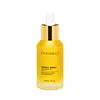What's inside
What's inside
 Key Ingredients
Key Ingredients

 Benefits
Benefits

 Concerns
Concerns

 Ingredients Side-by-side
Ingredients Side-by-side

Caprylic/Capric Triglyceride
MaskingPEG-40 Sorbitan Peroleate
EmulsifyingSclerocarya Birrea Seed Oil
HumectantCetyl Ethylhexanoate
EmollientC12-15 Alkyl Benzoate
AntimicrobialOryza Sativa Bran Extract
Skin ConditioningHelianthus Annuus Extract
EmollientRosmarinus Officinalis Leaf Extract
AntimicrobialCitrus Aurantium Dulcis Peel Oil
MaskingLavandula Hybrida Oil
EmollientLimonene
PerfumingTocopherol
AntioxidantEucalyptus Globulus Leaf Oil
PerfumingDicaprylyl Carbonate
EmollientParfum
MaskingLinalool
PerfumingCaprylic/Capric Triglyceride, PEG-40 Sorbitan Peroleate, Sclerocarya Birrea Seed Oil, Cetyl Ethylhexanoate, C12-15 Alkyl Benzoate, Oryza Sativa Bran Extract, Helianthus Annuus Extract, Rosmarinus Officinalis Leaf Extract, Citrus Aurantium Dulcis Peel Oil, Lavandula Hybrida Oil, Limonene, Tocopherol, Eucalyptus Globulus Leaf Oil, Dicaprylyl Carbonate, Parfum, Linalool
Cocoglycerides
EmollientCaprylic/Capric Triglyceride
MaskingOctyldodecanol
EmollientCocos Nucifera Oil
MaskingCrambe Abyssinica Seed Oil
Skin ConditioningEthylcellulose
Oenothera Biennis Oil
EmollientHelianthus Annuus Seed Oil
EmollientHibiscus Sabdariffa Seed Oil
EmollientRosa Moschata Seed Oil
EmollientHoney Extract
HumectantPropolis Extract
Skin ConditioningRoyal Jelly Extract
Skin ConditioningHippophae Rhamnoides Oil
EmollientHippophae Rhamnoides Seed Oil
Skin ProtectingHelianthus Annuus Extract
EmollientCitrus Aurantium Bergamia Fruit Oil
MaskingTocopherol
AntioxidantOryza Sativa Bran Extract
Skin ConditioningWater
Skin ConditioningRosmarinus Officinalis Leaf Extract
AntimicrobialAroma
Limonene
PerfumingLinalool
PerfumingCocoglycerides, Caprylic/Capric Triglyceride, Octyldodecanol, Cocos Nucifera Oil, Crambe Abyssinica Seed Oil, Ethylcellulose, Oenothera Biennis Oil, Helianthus Annuus Seed Oil, Hibiscus Sabdariffa Seed Oil, Rosa Moschata Seed Oil, Honey Extract, Propolis Extract, Royal Jelly Extract, Hippophae Rhamnoides Oil, Hippophae Rhamnoides Seed Oil, Helianthus Annuus Extract, Citrus Aurantium Bergamia Fruit Oil, Tocopherol, Oryza Sativa Bran Extract, Water, Rosmarinus Officinalis Leaf Extract, Aroma, Limonene, Linalool
 Reviews
Reviews

Ingredients Explained
These ingredients are found in both products.
Ingredients higher up in an ingredient list are typically present in a larger amount.
This ingredient is an emollient, solvent, and texture enhancer. It is considered a skin-softener by helping the skin prevent moisture loss.
It helps thicken a product's formula and makes it easier to spread by dissolving clumping compounds.
Caprylic Triglyceride is made by combining glycerin with coconut oil, forming a clear liquid.
While there is an assumption Caprylic Triglyceride can clog pores due to it being derived from coconut oil, there is no research supporting this.
Learn more about Caprylic/Capric TriglycerideHelianthus Annuus Extract comes from the common sunflower.
Sunflowers are rich in vitamin E. Studies show sunflowers contain antimicrobial and antioxidant properties.
The fatty acids found in sunflowers include (from highest amount to least): linoleic acid, myristic acid, palmitic acid, stearic acid, arachidic acid, oleic acid, and linolenic acid.
These fatty acids hydrate your skin. Emollients create a film on the skin to prevent moisture from escaping.
Learn more about Helianthus Annuus ExtractLimonene is a fragrance that adds scent and taste to a formulation.
It's found in the peel oil of citrus fruits and other plants such as lavender and eucalyptus. The scent of limonene is generally described as "sweet citrus".
Limonene acts as an antioxidant, meaning it helps neutralize free radicals.
When exposed to air, oxidized limonene may sensitize the skin. Because of this, limonene is often avoided by people with sensitive skin.
The term 'fragrance' is not regulated in many countries. In many cases, it is up to the brand to define this term. For instance, many brands choose to label themselves as "fragrance-free" because they are not using synthetic fragrances. However, their products may still contain ingredients such as essential oils that are considered a fragrance.
Learn more about LimoneneLinalool is a fragrance and helps add scent to products. It's derived from common plants such as cinnamon, mint, citrus, and lavender.
Like Limonene, this ingredient oxidizes when exposed to air. Oxidized linalool can cause allergies and skin sensitivity.
This ingredient has a scent that is floral, spicy tropical, and citrus-like.
Learn more about LinaloolOryza Sativa Bran Extract comes from the outer layer of a rice kernel. It is a byproduct of milling rice, or the operation to produce a whole grain rice product.
This ingredient has moisturizing properties due to its components of polysaccharides and omega-3 fatty acids. It also contains calcium, selenium, phosphorus, iron, and zinc.
Oryza Sativa Bran Extract contains numerous antioxidants such as ferulic acid. Antioxidants help fight free-radical molecules. Free-radical molecules are capable of damaging our cells and other genetic material.
Learn more about Oryza Sativa Bran ExtractRosmarinus Officinalis Leaf Extract comes from rosemary. Rosemary is native to the Mediterranean.
While Rosmarinus Officinalis Leaf Oil can be volatile due to its fragrant properties, the fragrance components are usually removed in the leaf extract.
Rosemary Leaf Extract contains many antioxidants such as rosmarinic acid and caffeic acid. Rosemarinic acid, a compound found in rosemary leaf, has been found to help soothe skin conditions such as eczema and acne.
Learn more about Rosmarinus Officinalis Leaf ExtractTocopherol (also known as Vitamin E) is a common antioxidant used to help protect the skin from free-radicals and strengthen the skin barrier. It's also fat soluble - this means our skin is great at absorbing it.
Vitamin E also helps keep your natural skin lipids healthy. Your lipid skin barrier naturally consists of lipids, ceramides, and fatty acids. Vitamin E offers extra protection for your skin’s lipid barrier, keeping your skin healthy and nourished.
Another benefit is a bit of UV protection. Vitamin E helps reduce the damage caused by UVB rays. (It should not replace your sunscreen). Combining it with Vitamin C can decrease sunburned cells and hyperpigmentation after UV exposure.
You might have noticed Vitamin E + C often paired together. This is because it is great at stabilizing Vitamin C. Using the two together helps increase the effectiveness of both ingredients.
There are often claims that Vitamin E can reduce/prevent scarring, but these claims haven't been confirmed by scientific research.
Learn more about Tocopherol